Fauvism
Origin
At the end of the 19th and the beginning of the 20th century, there was a break with previous artistic tradition, the result of a search for renewal in the art of the contemporary world. In the visual arts, this break is marked around figuration. Pictorial movements such as Impressionism and Expressionism, seek to make the world see reality in a new and creative way. Fauvism is one of the trends that emerged in the process of renewing the arts, standing out for its intensification of color, and the creation of new dimensions, playing with chromatic combinations.
It was at the Paris Autumn Salon in the year 1905, where Louis Vauxcelles (art critic) gave this new art trend its name with one of his comments about the sculpture "Torso of a Boy" by Albert Marque, which was placed at the center of the room: "...it's Donatello among the wild beasts" (...Mais c'est Donatello parmi les fauves). The name of this avant-garde movement came from that statement, which so vividly described what it felt like to see that explosion of color, which artists like Henri Matisse, André Derain, Maurice Vlaminck, and Henri Manguin highlighted and developed extensively in painting.
-
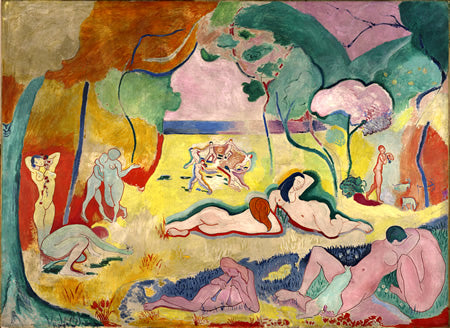
"The Joy of Life"Painting created in 1906 by Henri Matisse.
Original Title Le bonheur de vivre. Considered one of the icons of Fauvism, the unrealistic coloring and the Edenic theme serve the artist to counter the criticism that his works had recently been subject to. He does not abandon his style, but rather strengthens it against all the more conservative trends of the era.
Currently belongs to the Barnes Foundation, Philadelphia, United States.
-
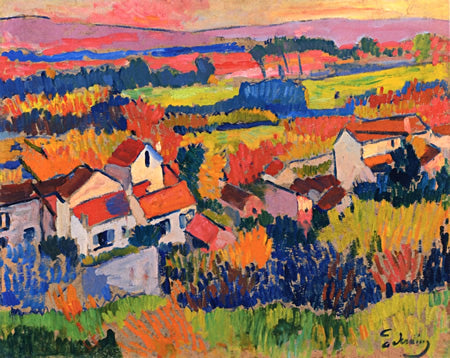
"Landscape in Chatou"Canvas made in 1904 by André Derain, who is one of the most eccentric painters to join Matisse's cause.
Also known as "Landscape near Chatou".
Currently not on public display, it belongs to a private collection.
-
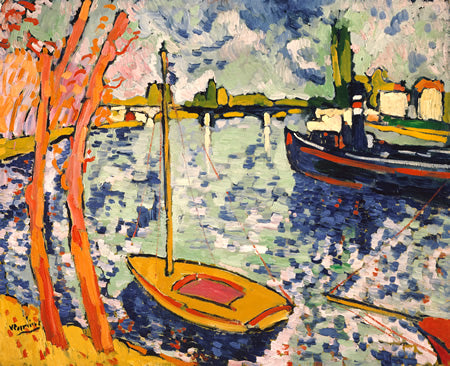
"The Seine at Chatou"Work painted in oil on canvas by Maurice Vlaminck in 1906.
It is currently located at the MET Museum, in New York.
Style characteristics
With Fauvism, the goal was to find completely new and original means of expression. Bright, pure colors in places where we wouldn’t expect to see them. Matisse, trying to explain it, says: "When I put green, it’s not grass; when I put blue, it’s not the sky." The drawing gives the composition, and the color gives the feeling. Therefore, the Fauvists didn’t seek to literally reproduce a landscape or portrait, but rather the emotion it evokes. That’s the aim of the avant-garde and the goal of Fauvism: To express feeling. Expressing a person’s feelings, however, is very complicated since everyone perceives emotions differently. That’s why every work of art is unique and speaks to each person in their own context.
Fauvist Artists
The Fauves found a way to make color transcend composition in a way never seen before. They discovered how to break down the object within a composition, and they did it through color. Fauvist drawing is sharp, with no detail. In Matisse's Woman with a Hat, we can see that the drawing of the woman is nothing special; in fact, it's quite simple. It's the contrast of colors that creates the composition and ultimately speaks to the viewer.
-
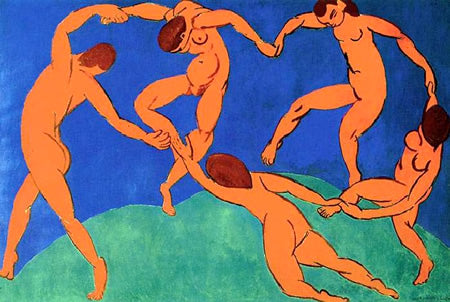
"The Dance"Painting dated 1910and signed by Henri Matisse.
Original title: La Danse. This is the artist’s most famous painting, already in his time (and still today), it was considered that the figures demonstrated masterful dynamism.
It is located at the Hermitage Museum, Saint Petersburg.
-
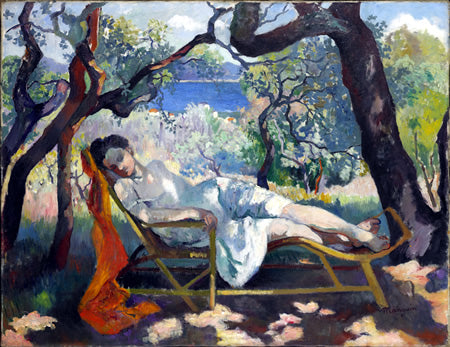
"The Siesta"Painting by Henri Manguin, created in 1905.
Its original title in French is "La Sieste (Le repos, Jeanne, Le Rocking-Chair)".
It is currently in the Villa Flora Museum, Switzerland.
0 products
